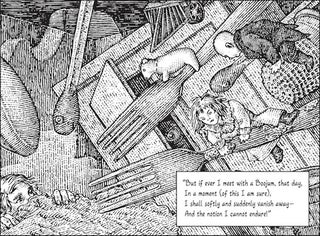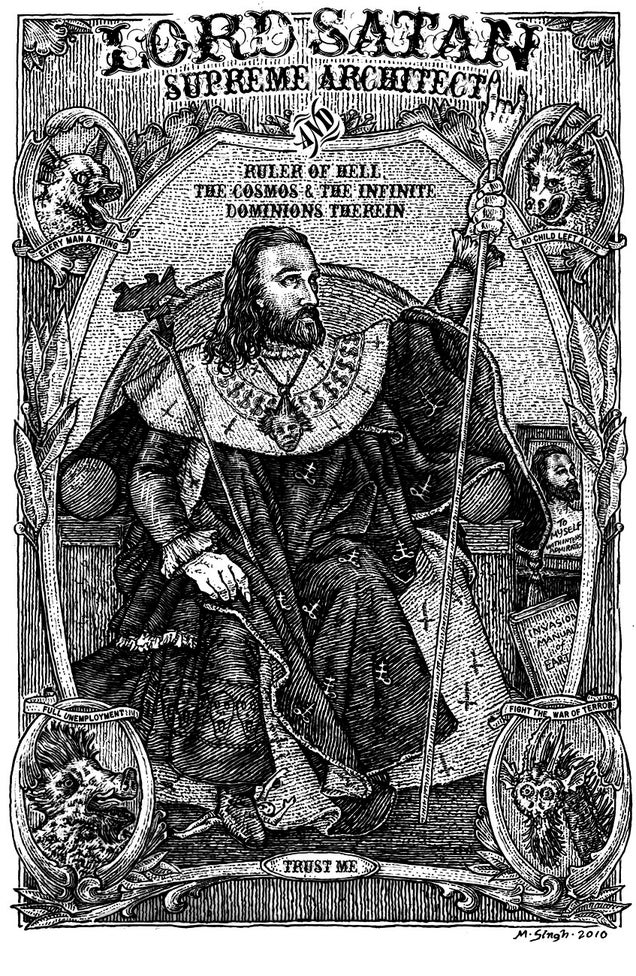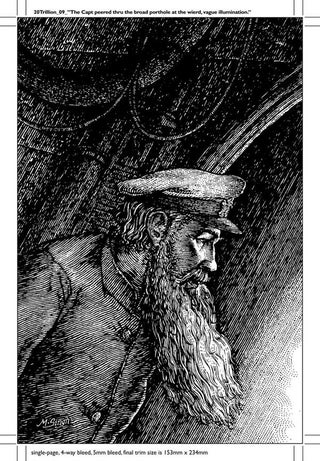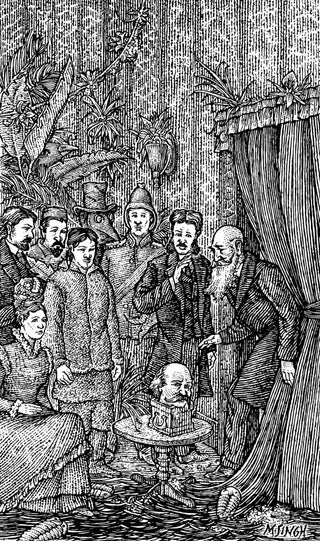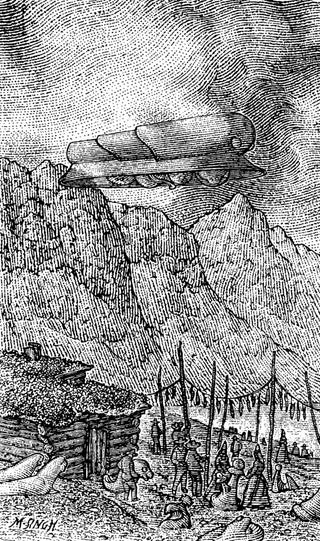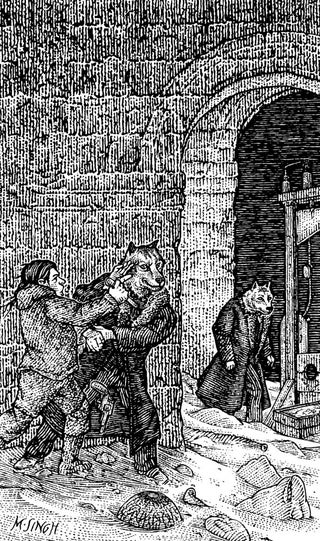For some time a debate has been raging about the politics of the subgenre.
For some, Steampunk is a reactionary nostalgia for past that never happened. In a review last year, author and critic Adam Roberts claimed that Steampunk is a perfect example of Jameson’s claim that the culture of postmodernism means a loss of any sense of historicity. For Roberts, Steampunk is ‘a studied dismantling of the consecutiveness of history in the service of a particular set of styles and fashions.’ He continues:
the appeal of the genre is in the way it finesses the past into the present. This is an aesthetic strategy it shares with Heroic Fantasy (or much of it) as a mode: a disinclination to encounter the past as past. Most twenty-first century representations of a notional “past” are based on the idea that people in the nineteenth century (or, in post-Tolkienian Fantasy, the middle ages) were basically people exactly like us, and therefore people with whom it requires no effort from the reader to identify.
According to Roberts, Steampunk jettisons a sense of the logic of history. Fundamentally, the subgenre is an irrationalism.
Others have mounted similar arguments. A couple of years ago, science fiction author Charles Stross claimed on his blog that most steampunk refused to face up to the Nineteenth Century as it really was. In that world, Stross claimed:
Life was mostly unpleasant, brutish, and short; the legal status of women in the UK or US was lower than it is in Iran today: politics was by any modern standard horribly corrupt and dominated by authoritarian psychopaths and inbred hereditary aristocrats: it was a priest-ridden era that had barely climbed out of the age of witch-burning, and bigotry and discrimination were ever popular sports: for most of the population starvation was an ever-present threat. I could continue at length. It’s the world that bequeathed us the adjective “Dickensian”, that gave us a fully worked example of the evils of a libertarian minarchist state, and that provoked Marx to write his great consolatory fantasy epic, The Communist Manifesto. It’s the world that gave birth to the horrors of the Modern, and to the mass movements that built pyramids of skulls to mark the triumph of the will. It was a vile, oppressive, poverty-stricken and debased world and we should shed no tears for its passing (or the passing of that which came next).

Evan Calder Williams makes a different point in his book Combinded and Uneven Apocalypse. For him, steampunk is a ‘weak handmaiden of Obama-era capitalism.’ That is, he periodises steampunk according to the conjuncture, much as China Miéville once periodised the ‘New Weird’ according to the development of the anti-globalisation movement. For Evan Calder Williams, the promise behind steampunk is to ‘keep technology, keep consumption, but make it “thoughtful,” make it responsible, make it “sustainable.” All in all, a participation in that great pastime of the pseudo-Left, remembering the era that never was, back when life was simpler and labor was meaningful.’
But if there is a strong current of left critiques of steampunk, there are also those who defend it. In response to Roberts, Jeff Vandermeer, co-writer of The Steampunk Bible and co-editor of the anthologies Steampunk and Steampunk Reloaded, claimed that these sorts of readings were selective. Vandermeer wrote to Roberts that:
you’ve basically defined a subset of steampunk in your analysis rather than the totality of it, that you’ve decided to focus on one small cog in terms of the mindset behind it, I hope you’ll understand that the impulse to defend something that alas from the term itself *seems* intended to be nostalgic comes from somewhere decidedly *non-escapist*. This isn’t from any particular special love for steampunk fiction or from writing it myself – I don’t – but from simply having had to exhaustively document it and the whole creative subculture.

This response has two aspects to it. The first is a purely material objection: many of the works of steampunk don’t fit the claims of its critics. The second is that as a result, these critics get the definition of steampunk wrong. What is interesting is the way that this debate echoes an earlier debate between advocates of science fiction and those of fantasy. For many of the early critics of the genres, science fiction was a progressive form and fantasy the reactionary one. Science fiction was forward looking, a literature of ‘cognitive estrangement’ as critic Darko Suvin famously defined it, a way of rational thinking. It made you consider the way the world of the story worked (the cognitive side of the definition), the rules of the social structure, if you like, and this made the reader reflect back on our own world. If you present a world without sexism or racism, this naturally makes the reader ask, ‘what causes these discriminations in our world?’
According to these critics, fantasy was instead irrationalist; for Suvin, it was a ‘sub-literature of mystification’. It didn’t operate according to the rules of science (either social or the ‘hard’ sciences). It was obsessed with the return to a romanticised neo-feudal world, in which the highest political aspiration was to be ruled by a benevolent ‘king’, be that Aragorn or the kitchen-hand who, unbeknown to himself, was deposed by an evil lord and is yet to realise his destiny. We can be sure that by the end of the series, the king will be restored to his throne, order will be reinstituted (with everyone in their place) and everything will be right with the world.
But this long-accepted critique was blown apart by writers of the ‘New Weird’, another subgenre of speculative fiction who (recalling the writers of the 1930s) broke down the boundaries of science fiction and fantasy. China Miéville’s books were probably at the forefront of this, but just as important was the introduction he wrote for the journalHistorical Materialism’s symposium on fantasy. For Miéville:
The usual charge that fantasy is escapist, incoherent or nostalgic (if not downright reactionary), though perhaps true for great swathes of the literature, is contingent on content. Fantasy is a mode that, in constructing an internally coherent but actually impossible totality – constructed on the basis that the impossible is, for this work, true – mimics the ‘absurdity’ of capitalist modernity.
Indeed, for Miéville, the fantastic is embedded in contemporary capitalism, both in the ways that commodification works and in the way that the human imagination is part of the productive cycle. Real life under capitalism is a fantasy.
Moreover, for Miéville, fantasy can have exactly the same ‘cognition effect’ as science fiction. A fantastic novel about class, race or sexuality might have greater insight into contemporary reality as a novel about the bickering of a middle-class family isolated from great social struggles. In other words, fantasy can be just as good to think with as science fiction. But it depends more on the work itself rather than the specific form.
These arguments seem to me to be true also of steampunk. The point is not so much the ‘content’ of the fiction, but rather the attitude of the work to its own content. Just as one can write a nostalgic view of the Victorian era from the point-of-view of the aristocracy, so one could write a critical view from the point of view of marginalised. Steampunk, like many cultural forms, is a thus site of struggle. The real divisions lie not between genres, it seems to me, but across them.
Source: overland.org.au












